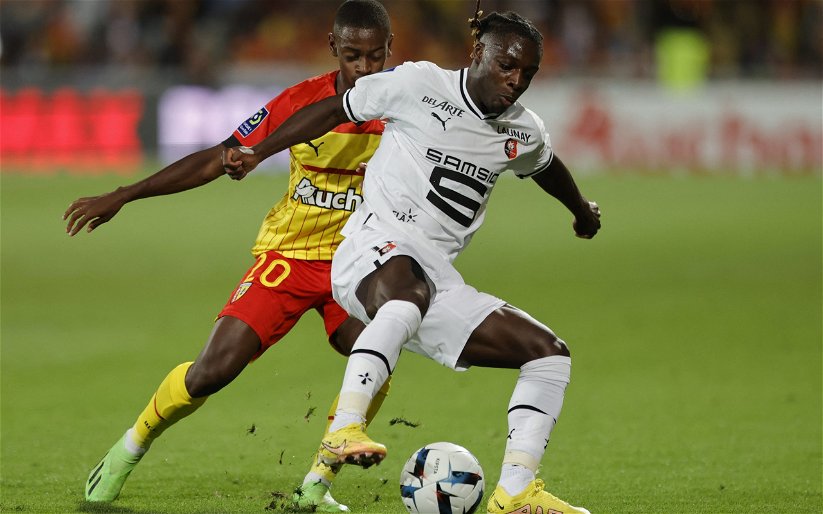 Anfield. The name alone conjures up an image of inspiration for every Liverpool fan and evokes memories of legendary afternoons and evenings for football supporters the world over. The place is steeped in history. It’s trophy room has been the residence of the League Championship trophy on no less than nineteen occasions. Yes, nineteen. That is neither a misprint nor an error by the author, as the first of those Championship campaigns came when Everton’s name was above the home dressing room door, two years before the well-documented rent dispute which led to John Houlding forming Liverpool Football club. (by the way, the home dressing room in those early days was not at the Anfield ground at all, instead the players had to change at the nearby Sandon pub and would walk across to the ground prior to kick-off).
Anfield. The name alone conjures up an image of inspiration for every Liverpool fan and evokes memories of legendary afternoons and evenings for football supporters the world over. The place is steeped in history. It’s trophy room has been the residence of the League Championship trophy on no less than nineteen occasions. Yes, nineteen. That is neither a misprint nor an error by the author, as the first of those Championship campaigns came when Everton’s name was above the home dressing room door, two years before the well-documented rent dispute which led to John Houlding forming Liverpool Football club. (by the way, the home dressing room in those early days was not at the Anfield ground at all, instead the players had to change at the nearby Sandon pub and would walk across to the ground prior to kick-off).
From the evolution of the mighty Spion Kop, the addition of the vast roof to the terrace in 1928, the Billy Liddell era, the magical sixties under Shankly and famous nights against Inter Milan, St Etienne, Bruges, Chelsea, Arsenal, Barcelona, countless derby day memories etc to the moving tributes to the victims of April 15th 1989, football’s most famous venue has seen just about everything.
When David Moores and Rick Parry decided upon the ill-fated sale of the club to Tom Hicks and George Gillett in 2007, it was because Mr Moores did not have the necessary funds to move Liverpool FC up to the level at which it could compete with Manchester United, insofar as the Anfield capacity was inadequately short of that required.
Enter the new US owners. At their inaugural press conference on 7th February 2007, Gillett confirmed their commitment to abandon the current site and build the proposed New Anfield stadium in nearby Stanley park. He stated clearly:
“The shovel needs to be in the ground in the next 60 days. We are fully supportive of the Stanley park development and of building a facility that we hope will be the greatest facility in this sport.”
This grandiose statement was sadly to prove to be typically wide of the mark and by the end of 2010 the hapless owners had been forcibly removed by a combination of fan-power and foreclosure by the lending banks.
And so to the present. NESV (now FSG) are in control and to the relief of Liverpool’s vast army of followers they have thus far proved to be a model of low-key discretion. There have been no wild claims, no shotgun announcements; just measured statements more in keeping with the fabled ‘Liverpool Way’. So where does all this leave Liverpool FC and their stadium dilemma? Earlier this week new Liverpool chairman gave his first series of media interviews in which he confirmed that no decision has yet been finalised over the stadium issue. Tellingly, he did confirm that the current ground is “not fit for purpose” and that Manchester United had “zoomed past us” in the area of matchday revenue.
So how do LFC narrow the gap in generation of matchday revenues? Basically there are three options on the table (well, two in reality)
- Redevelop current site
- Groundshare with Everton FC (Stanley Park site)
- Relocate to new site in Stanley Park
Let me first of all rule out the second (groundshare) option. There will be no groundshare, in spite of Everton’s obvious leaning towards it and the regular revisitation of the topic by certain prominent members of the Council and local community. Given EFC’s parlous financial state, a shared ground would have to be built and owned by Liverpool with the Blues being tenants. (An ironic proposition, given the circumstances of LFC’s formation in 1892). One end of the stadium would invariably become known as ‘their end’ and there are far too may Liverpool supporters who would simply refuse to occupy those seats during the Reds’ home matches.
So having ruled out the groundshare option, it becomes a straight choice – RELOCATE or REDEVELOP.
Capacity / land constraints
By redeveloping the current Anfield stadium the increased capacity would be limited to the amount of additional footprint available. Both the Kop and Centenary Stands are of a reasonable size and it would be safe to assume that initial development of the Main Stand and Anfield Road End would be high on the agenda. The Main Stand has a small car park area to the rear with terraced houses beyond. However most of the properties in Lothair Road adjoining this side of the stadium are unoccupied and the club has purchased most, if not all of them. (There would be estate issues to be resolved if any were still in private ownership).
Historically the ground has been constrained on it’s north east side by Anfield Road, and when the second tier was added in the 90s the issues of right-to-light was a major stumbling block and curtailed the club’s proposals. Since the planning approval for the new site in Stanley Park was granted, however, the properties on Anfield Road directly opposite the stadium have been demolished and cleared to facilitate the proposed Anfield Plaza. (Luckily the first property to escape the bulldozers on the Arkles side of the ground is no.73 Anfield Road. A grand property which was the John Houlding’s home and where he held the meeting on 15th March 1892 which resulted in the agreement to form Liverpool Football Club.)
This site clearance work for the new stadium has paradoxically opened up the possibilities for redevelopment. The fact that there is now space between the Anfield Road End makes it possible to extend in that direction. A new stand equal in size to the Kop could now be accommodated. What about Anfield Road itself? If permission could not be gained to realign Anfield Road so that it is diverted some 30 metres or so into the park then a new stand could span across the road so that the traffic passes through via an underpass. Of course during construction the road would need to be closed anyway for up to a year so in my opinion the option of constructing a diverted thoroughfare as an advanced works phase would be the preferred option.
I estimate initial redevelopment of Centenary and Main Stands as above would enable an increased capacity of up to around 60,000 as a minimum.
The footprint of the approved site in Stanley Park between Mill Lane (path bisecting the main field) and Arkles Lane is of sufficient area to accommodate a stadium of any size up to 90,000.
Continue Reading on Page 2 . . .
 Its live fantasy football! Become part of Liverpool v Fulham and play Picklive for FREE. A Free Trial for every reader here
Its live fantasy football! Become part of Liverpool v Fulham and play Picklive for FREE. A Free Trial for every reader here
 This week it is former Liverpool WAG Joanna Taylor!
This week it is former Liverpool WAG Joanna Taylor!
————–
CLICK ON THE IMAGE OR HERE TO GET TO THE GALLERY
–



we cant fill our ground as it is now so more seating, for what exactly? we are losing our fans from outside the city as they only follow us after our 30 snapshot of winning things out of our 110 year history… stay where we are I say!!
If Anfield can become a 65-70 thousand seater fine, if not new stadium, whatever, it’s the fans that make Anfield what it is and they always will.
No argument – expand Anfield. It’s feasible and can be taken to 55-60 thousand capacity. Good enough.
Relocate to a new stadium. It’s the only way to be sure of keeping pace at the top. Glorious the memories of Anfield may be but it’s had it’s day. Don’t look to the past, look to the future.
Did Newcastle not knock & rebuild two of their stands in the closed season and have them more or less ready for teh start of the new season
Redevelopment of Anfield is no harder than a new build, is certainly cheaper and should be pursued. Furthermore, a capacity of 76,700 is achieveable with planning permissions. Look what was achieved in planning permission in a short period under the H & G regime.
The footprint of Anfield can be facilitated to that capacity if the Anfield Road End gains the necessary permissions. Bearing in mind we own the area behind now as part of the original Plaza project (and the houses have already been demolished) that area of the stadium will be key to the development as the reaminder of the stadium can be wrapped in phases.
As eluded to earlier, works have been done in the past without major disruption to attendance and due to the angle of stands required on 2 sides to match the Centenary side, works can be conducted to the rear and even the roof built spanning the existing roofs until their removal is necessary and probably in close season without disruption on matchdays. Roads around the stadium are closed on matchday anyway so no change there.
The KOP needs a higher angle and due to constraints in Lower Breck Road will most likely be rounded to the rear as well instead of the current irregular shape that does not make best use of space.
The KOP should and will always remain the single commanding icon of the stadium, and rightly so.
Stay at Anfield, keep the faith.